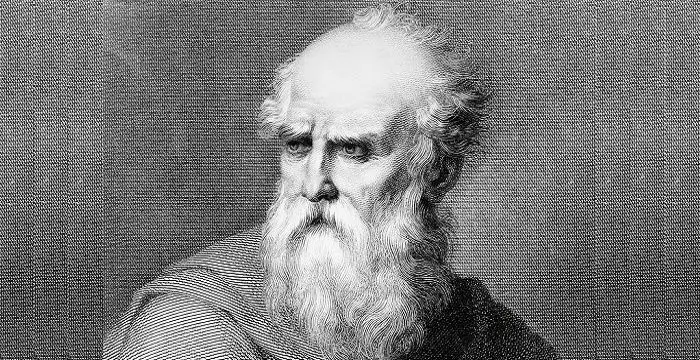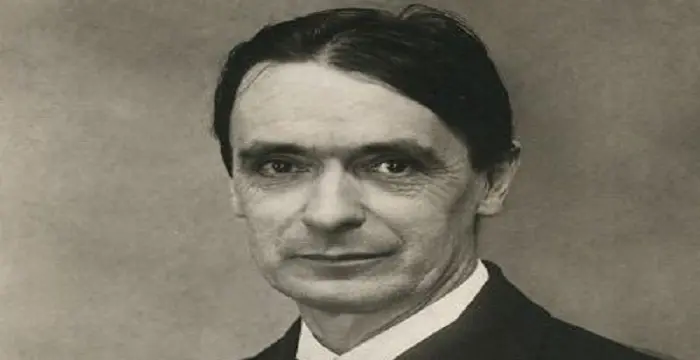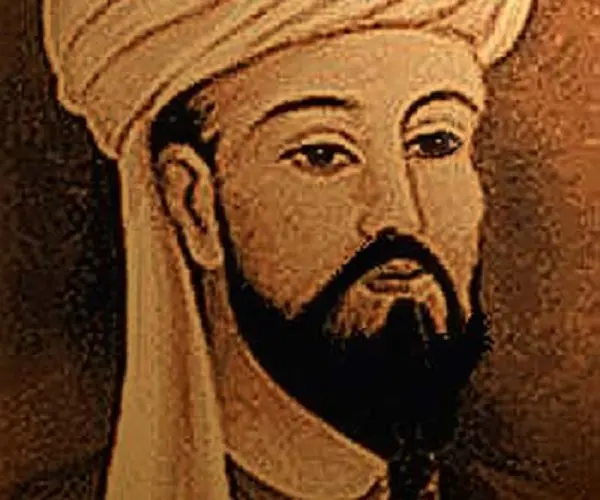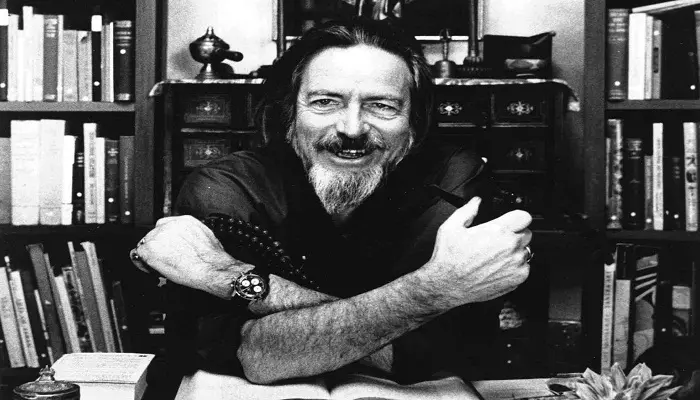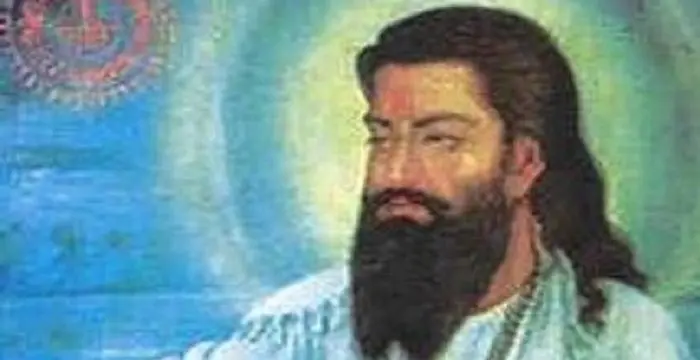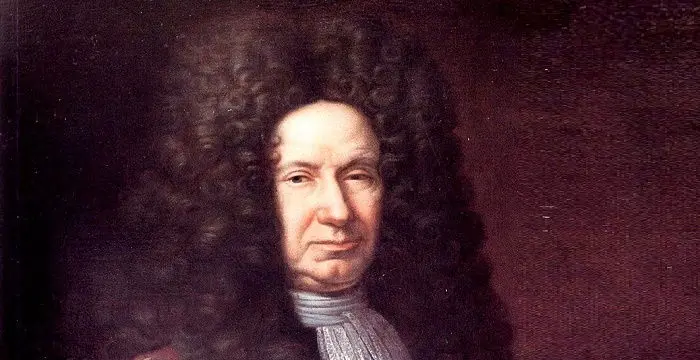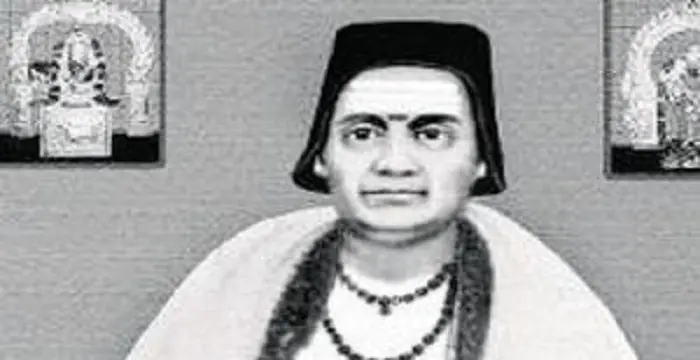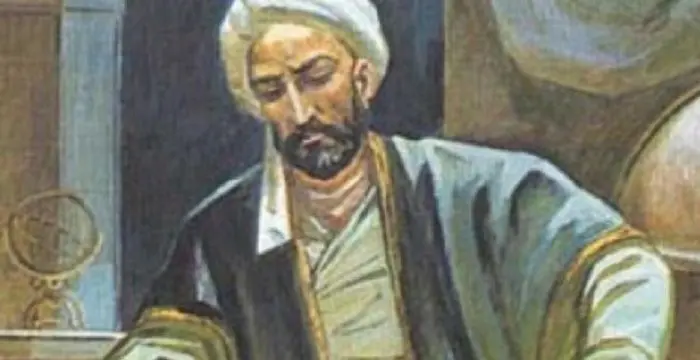
Nasir al-Din al-Tusi - Writers, Family and Life
Nasir al-Din al-Tusi's Personal Details
Nasir al-Din al-Tusi was a Muslim Persian scholar and an author of numerous books on various subjects
| Information | Detail |
|---|---|
| Birthday | February 18, 1201 |
| Died on | June 26, 1274 |
| Nationality | Iranian |
| Famous | Architects, Philosophers, Mathematicians, Writers |
| Nick names | Nasīr al-Dīn Tūsī, Tusi |
| Known as | Muhammad ibn Muhammad ibn al-Hasan al-Tūsī, Nasīr al-Dīn Tūsī, Tusi |
| Discoveries / Inventions |
|
| Birth Place | Tous |
| Religion | Shia Islam |
| Gender | Male |
| Sun Sign | Aquarius |
| Born in | Tous |
| Famous as | Writer |
| Died at Age | 73 |
// Famous Architects
Vitruvius
Vitruvius was a Roman architect, author, and military engineer during the 1st century BC. Check out this biography to know about his childhood, family life, achievements and fun facts about his life.
Rudolf Steiner
Rudolf Steiner introduced groundbreaking ideas in realms of spirituality, art, education and agriculture. Check out this biography to know about his childhood, family life, achievements and other facts related to his life.
Zaha Hadid
The famous Iraqi-British architect Zaha Hadid is known for her designs of the ‘Rosenthal Center for Contemporary Art’ and ‘Heydar Aliyev Center’. To know more about her childhood, profile, career and timeline read on.
Nasir al-Din al-Tusi's photo
Who is Nasir al-Din al-Tusi?
Nasir al-Din al-Tusi was a prolific author and an eminent scholar in the Islamic medieval period who wrote in different fields of philosophy and science. He was a multi-talented personality who made several accomplishments in a wide range of learning areas, including mathematics, philosophy, astronomy, architecture, theology, Islamic medicine, occult sciences, music, logic, physiology, literature and geography. He made major findings in the fields of astronomy and trigonometry, years before anyone even thought of them. He was instrumental in establishing one of the largest astronomical observatories in the Islamic world, situated in Maragha, modern-day Azerbaijan. He is known for introducing astronomical tables for planetary movements, which were used by astrologers in the coming years. He started writing as a student and went on to become a talented and learned intellectual. His journey of discovering and researching on a variety of subjects began when he was captured and hired as a scientific advisor by Mongol leader Hulagu Khan. He is credited for authoring over 150 books in Arabic and Persian in Islamic subjects as well as in secular areas. He translated the works of some of the most distinguished mathematicians and astrologers in Arabic
// Famous Philosophers
Martin Buber
One of the greatest philosophers to have ever walked on earth, Martin Buber contributions to philosophy is a long-standing one. Explore all about his profile, childhood, life and timeline here.
Lao Tzu (Laozi)
Lao Tzu was a legendary Chinese philosopher who wrote the important “Daodejing”. This biography profiles his childhood, life, career, achievements and timeline.
Alan Watts
Alan Watts was a famous British philosopher known for his Zen teachings and interpretations of Eastern philosophy. Read more about this great philosopher in the following article.
Childhood & Early Life
Khwaja Muhammad ibn Muhammad ibn al-Hasan al-Tusi, or Nasir al-Din al-Tusi for short, was born on February 18, 1201, in Tus, medieval Kharasan (now north-eastern Iran), into a wealthy and learned Twelver Shi’ah family.
After losing his father as a child, he devoted his entire life in accomplishing his father’s dream of becoming a learned scholar.
His education started in Tus where he was taught physics, logic and metaphysics by his uncle, while he learnt mathematics under other teachers.
He moved to Nishapur, a prominent learning center, as a teenager to study more advanced topics in mathematics, philosophy and medicine. Thereafter, he went to Mosul to take mathematics and astronomy lectures.
Career
While studying at Mosul, he completed a small booklet of philosophical Sufi compositions ‘Awsaf al-Ashraf’ (The Attributes of the Illustrious).
After completing his education in the early 1230s, he took refuge from the Mongols, who had invaded Tus, at the Isma’ili fort, where he spent the next 25 years researching on philosophy, astronomy, logic and mathematics.
In 1247, he authored ‘Tahrir al-Majisti’ (Commentary on the Almagest) as an introduction to trigonometry and showed various methods to calculate sine tables.
While he was at the Isma’ili capital, Alamut, in 1256, the Mongols, led by Hulagu Khan, invaded and captured him. However, he was appointed Hulagu’s scientific advisor due to his knowledge, talent and abilities.
In 1259, he began the construction of Rasad Khaneh Observatory in Maragha, after seeking Hulagu’s consent and served as its director till his death. It was equipped with the best instruments and included a library and school as well.
His four-volume ‘Zij-i ilkhani’ (Ilkhanic Tables), completed in 1272, is one of his major astronomical works, which presents the research made at the observatory.
Among over 150 works he produced during his lifetime, he also translated the works of some eminent astrologers and mathematicians into Arabic - some being Archimedes, Autolycus, Ptolemy, Hypsicles, Theodosius, and Menelaus.
Some of his major works include ‘Akhlaq-i-Nasri’ (The Nasirean Ethics), ‘Al-Tadhkirah fi’ilm al-hay’ah’ (Memoir on Astronomy), ‘Tasawwurat’ (Notions), ‘Asas al-iqtibas’ (Foundations of Inference), and ‘Mi’yar al-ash’ar’ (Treatise on Poetics).
Major Works
He pioneered in building an astronomical observatory in Maragha, where he spent 12 years in producing an accurate table for planetary movements, which were used by astrologers till the 1600s.
He is credited with inventing the Tusi-couple, a geometrical technique for solving the problematic equant of Ptolemy. His invention was later used by famous astrologers – Ibn al-Shatir and Nicolaus Copernicus.
His ‘Treatise of the Quadrilateral’ is regarded as his best work on mathematics, where he differentiates between spherical trigonometry and astronomy, thus declaring trigonometry a branch of mathematics, distinct from astronomy.
He was the first astronomer to describe the Milky Way’s composition of numerous small and tightly-clustered stars, which was proved by Galileo Galilei three centuries later in 1610, using a telescope.
Personal Life & Legacy
He married a Mongol in 1256, after being accepted by Hulagu Khan.
In 1274, he went to Baghdad with a group of his students, where he died on June 26, at the age of 73.
A lunar crater, measuring 60-km in diameter, on the southern hemisphere of moon has been named as ‘Nasireddin’.
The Observatory of Shamakhy, in Republic of Azerbaijan, and K.M. Toosi University of Technology, in Iran, are named after this medieval Persian scholar.
Soviet astronomer Nikolai Stepanovich Chernykh discovered a minor planet in 1979 and named it ‘10269 Tusi’ in his honor.
In 2009, an honorary stamp was issued by the republic of Azerbaijan, dedicated to al-Tusi.
Google created a doodle as part of his 812th birthday celebrations in February 2013, which included the term ‘al-farsi’ (the Persian) called out in Arabic language.
Trivia
He earned the distinguished titles of ‘ustadh al-bashar’ (teacher of mankind), ‘khwaja’ (famous scholar), and ‘al-mu’allim al-thalith’ (third teacher, after Aristotle and Al-Farabi) for his exceptional works in a variety of subjects.
// Famous Writers
Joyce Meyer
Joyce Meyer is a Christian author and speaker. This biography provides detailed information about her childhood, life, achievements, works & timeline
Temple Grandin
Temple Grandin is a well-known American writer, autistic activist and animal expert. This biography profiles her childhood, life, achievements, career and timeline
Tennessee Williams
Tennessee Williams was one of the greatest playwrights of the 20th century. This biography of Tennessee Williams provides detailed information about his childhood, life, achievements, works and timeline.
Nasir al-Din al-Tusi biography timelines
- // 18th Feb 1201Khwaja Muhammad ibn Muhammad ibn al-Hasan al-Tusi, or Nasir al-Din al-Tusi for short, was born on February 18, 1201, in Tus, medieval Kharasan (now north-eastern Iran), into a wealthy and learned Twelver Shi’ah family.
- // 1247In 1247, he authored ‘Tahrir al-Majisti’ (Commentary on the Almagest) as an introduction to trigonometry and showed various methods to calculate sine tables.
- // 1256While he was at the Isma’ili capital, Alamut, in 1256, the Mongols, led by Hulagu Khan, invaded and captured him. However, he was appointed Hulagu’s scientific advisor due to his knowledge, talent and abilities.
- // 1256He married a Mongol in 1256, after being accepted by Hulagu Khan.
- // 1259In 1259, he began the construction of Rasad Khaneh Observatory in Maragha, after seeking Hulagu’s consent and served as its director till his death. It was equipped with the best instruments and included a library and school as well.
- // 1272His four-volume ‘Zij-i ilkhani’ (Ilkhanic Tables), completed in 1272, is one of his major astronomical works, which presents the research made at the observatory.
- // 1274In 1274, he went to Baghdad with a group of his students, where he died on June 26, at the age of 73.
- // 1610He was the first astronomer to describe the Milky Way’s composition of numerous small and tightly-clustered stars, which was proved by Galileo Galilei three centuries later in 1610, using a telescope.
- // 1979Soviet astronomer Nikolai Stepanovich Chernykh discovered a minor planet in 1979 and named it ‘10269 Tusi’ in his honor.
- // 2009In 2009, an honorary stamp was issued by the republic of Azerbaijan, dedicated to al-Tusi.
- // Feb 2013Google created a doodle as part of his 812th birthday celebrations in February 2013, which included the term ‘al-farsi’ (the Persian) called out in Arabic language.
// Famous Mathematicians
Grigori Perelman
Grigori Perelman is a Russian mathematician who is best known for his contributions to Riemannian geometry and geometric topology. Check out this biography to know about his childhood, family life, achievements and fun facts about him.
Terence Tao
Terence Tao is an Australian- American mathematician who has contributed enormously to the field of mathematics. Check out this biography to know about his childhood, family life and achievements.
Isaac Newton
Isaac Newton was an English scientist and mathematician, who discovered gravitation and Newtonian Mechanics. Read this biography to find more on his life.
Brahmagupta
Brahmagupta was a highly accomplished ancient Indian astronomer and mathematician. This biography of Brahmagupta provides detailed information about his childhood, life, achievements, works & timeline.
Giovanni Domenico Cassini
Giovanni Cassini was a 17th century Italian mathematician, astronomer and astrologer. This biography of Giovanni Cassini provides detailed information about his childhood, life, achievements, works & timeline.
Bhāskara II
Bhaskara II was a 12th century Indian mathematician. This biography of Bhaskara II provides detailed information about his childhood, life, achievements, works & timeline.
Nasir al-Din al-Tusi's FAQ
What is Nasir al-Din al-Tusi birthday?
Nasir al-Din al-Tusi was born at 1201-02-18
When was Nasir al-Din al-Tusi died?
Nasir al-Din al-Tusi was died at 1274-06-26
Where was Nasir al-Din al-Tusi died?
Nasir al-Din al-Tusi was died in Kadhimiya
Which age was Nasir al-Din al-Tusi died?
Nasir al-Din al-Tusi was died at age 73
Where is Nasir al-Din al-Tusi's birth place?
Nasir al-Din al-Tusi was born in Tous
What is Nasir al-Din al-Tusi nationalities?
Nasir al-Din al-Tusi's nationalities is Iranian
What is Nasir al-Din al-Tusi nick names?
Nasir al-Din al-Tusi's nickNames is Nasīr al-Dīn Tūsī, Tusi
What is Nasir al-Din al-Tusi's inventions/discoveries?
Tusi Couple was invented (or discovered) by Nasir al-Din al-Tusi
What is Nasir al-Din al-Tusi's religion?
Nasir al-Din al-Tusi's religion is Shia Islam
What is Nasir al-Din al-Tusi's sun sign?
Nasir al-Din al-Tusi is Aquarius
How famous is Nasir al-Din al-Tusi?
Nasir al-Din al-Tusi is famouse as Writer
